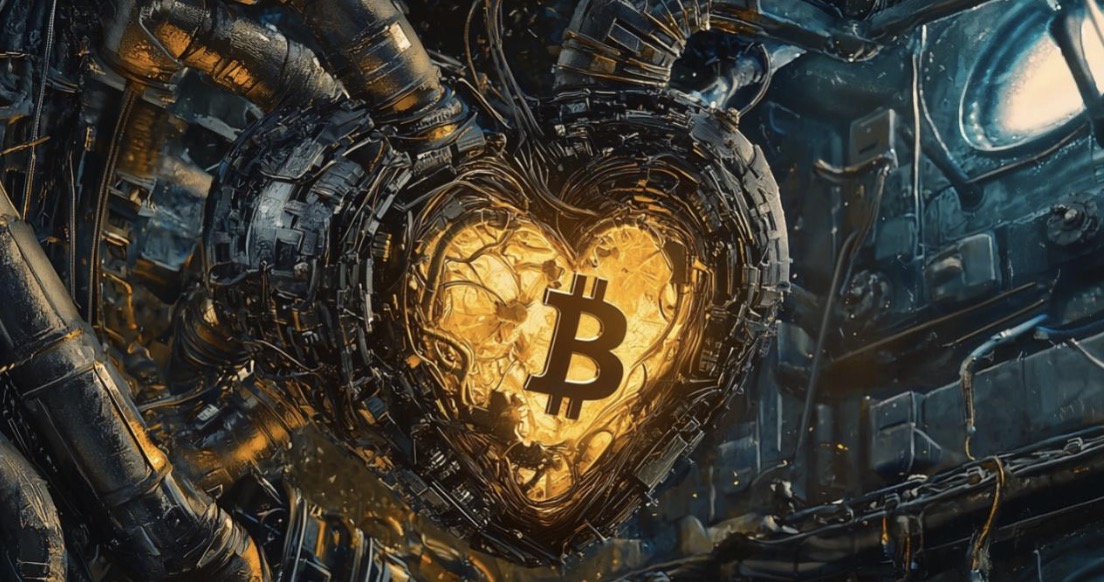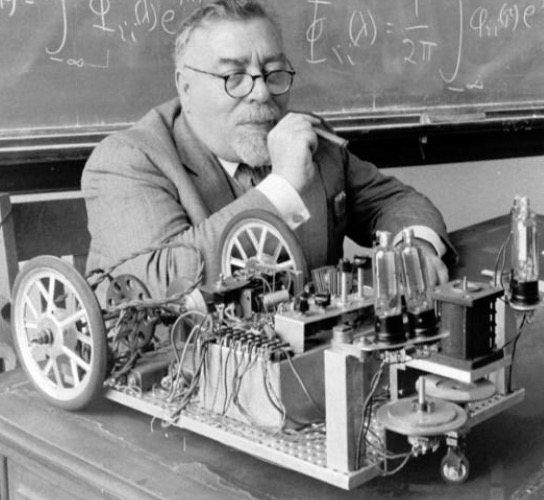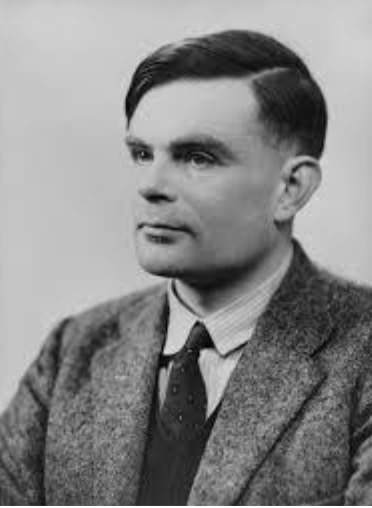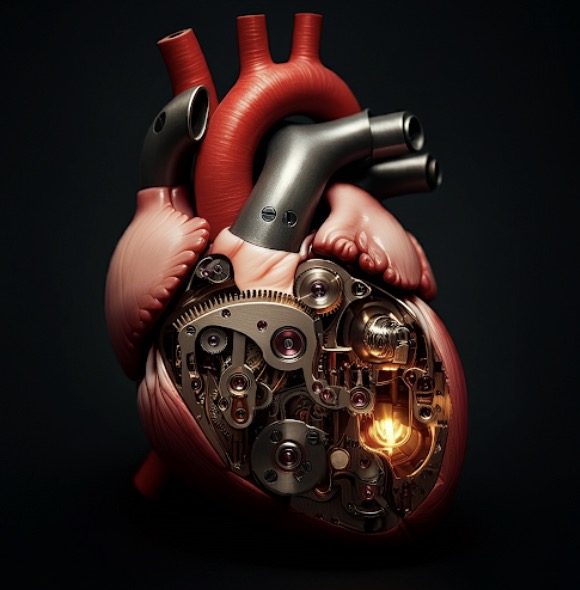
Gavin, BeeGee (Super Bitcoin and BEVM core builder)
December 4, 2024
From Cybernetics to the Crisis of Trust in the Information Age
The advent of the AI era has brought unprecedented opportunities and challenges. The explosion of information has made humans face the difficulty of processing and trusting massive amounts of data. Traditional trust mechanisms, such as centralized institutions and social consensus, have been unable to cope with the increasingly complex situation. AI algorithms with large language models as the core are constantly iterating at the speed of light. AI and its various variants will inevitably penetrate into all aspects of human life. However, behind this rapid development, are humans ready to deal with the resulting trust crisis?
As early as the sci-fi writer Isaac Asimov, in his book I, Robot, he had already foreseen that central control systems could go beyond the "Three Laws of Robotics" and pose a threat to humans. Recently, the insightful scholar Yuval Noah Harari has also raised a similar question: "Can we trust computer algorithms to make wise decisions and create a better world?" These concerns reflect the distrust of centralized power and algorithmic decision-making. In this context, the importance of decentralized trust has become increasingly prominent. How to build a trustworthy system without a central authority has become an urgent problem to be solved.
In order to solve this problem, we need to draw on a new theoretical framework, and cybernetics provides the key ideas.
Cybernetics and the Theoretical Basis of Bitcoin
Norbert Wiener, the father of cybernetics, explored the control and communication of systems in his book Cybernetics, emphasizing the key role of feedback mechanisms in maintaining system stability. His core ideas - self-organizing systems, nonlinear systems and the exploration of the essence of life - provide a solid theoretical foundation for us to understand the success of Bitcoin.

Norbert Wiener
Bitcoin's adaptive mechanical consensus is the practice of Wiener's cybernetics, which fully reflects the system's ability to self-regulate and self-organize. Through proof of work (PoW) and dynamic difficulty adjustment, the Bitcoin network achieves a high degree of decentralized control, ensuring the security and stability of the system. This mechanism not only conforms to the principles of information theory on information transmission and trust establishment, but also provides a new path to solve the trust crisis in the information age.
The essence of blockchain: decentralized control, not computing power
Currently, many blockchain projects overemphasize computing power indicators such as transaction processing speed (TPS), trying to occupy the market by improving computing performance. However, this pursuit of computing power ignores the core value of blockchain. The real revolutionary nature of blockchain lies in its realization of decentralized control, which solves the trust and collaboration problems that traditional centralized systems cannot cope with through adaptive mechanical consensus.
For example, the success of Bitcoin does not stem from its powerful computing power. In fact, the transaction processing capacity of the Bitcoin network is relatively limited. Its core value lies in the realization of a trust mechanism that does not require the participation of centralized institutions through decentralized control. Such a mechanism enables participants in the network to conduct secure transactions and collaboration without trusting each other. The establishment of such trust relies on strict cryptographic algorithms and consensus protocols, rather than the improvement of computing speed.
In contrast, some blockchain projects that emphasize high TPS, although they have advantages in performance, cannot establish a solid foundation of trust due to the lack of strong decentralized control. This is like building a high-rise building without a solid foundation, which is ultimately difficult to sustain.
Bitcoin’s Adaptive Mechanical Consensus: The Lifeblood of the Digital World
Bitcoin's adaptive mechanical consensus is like a "mechanical heart" in the digital world, giving the network the ability to self-regulate, self-organize, and self-evolve. In order to obtain Bitcoin rewards, miners invest a lot of computing power to participate in the proof-of-work competition. This mechanism not only ensures the security of the network, but also forms a self-reinforcing cycle: more miners participate, which increases the computing power of the entire network, increases the difficulty of mining, further strengthens the consensus mechanism, and increases the value of Bitcoin, attracting more miners to join.
This virtuous cycle embodies the characteristics of a self-organizing system. The stability and security of the network do not rely on any centralized entity, but are achieved through the joint competition and collaboration of participants. Bitcoin's consensus mechanism not only solves the Byzantine Generals Problem in distributed systems, but also demonstrates the complexity and emergent behavior of nonlinear systems.
Mathematician Alan Turing believed that thinking ultimately comes from the mechanical process of the brain. Logician Kurt Gödel believed that Turing's simple reduction of thinking to mechanical processes was a misunderstanding. He believed that human thinking has a depth and complexity that machines cannot reach, especially in terms of intuition, insight, and consciousness.

Alan Turing

Kurt Godel
However, Satoshi Nakamoto's Bitcoin provides a new perspective on this issue. Through adaptive mechanical consensus, he demonstrated that machines can also have abilities similar to human thinking. This "mechanical heart" enables the Bitcoin network to adjust and evolve autonomously, and has characteristics similar to living organisms. Although Bitcoin's "thinking" ability is limited to expressing the transfer of BTC and the change of UTXO status, it is already a preliminary manifestation of machine thinking.
If we think further and design a universal "mechanical heart" (adaptive mechanical consensus), it will be possible to build a mechanical adaptive control system that can express everything. This will have a profound impact on the development of artificial intelligence, and perhaps, as Gödel and Turing expected, it will push artificial intelligence to take a key step forward.
In biological and machine systems, we can divide their functions into three parts: senses for communication, brains for calculation, and hearts for thinking (control). In the Bitcoin network, the “heart” is its adaptive mechanical consensus. This is a breakthrough that Turing and Gödel did not foresee. Perhaps if they had seen the emergence of Bitcoin, they would have been excited about the development of artificial intelligence.

Nakamoto Paradigm: The Beginning of Mechanical Consensus and New Technology Paradigm
The birth of Bitcoin marks the emergence of a new technological paradigm, the "Satoshi Nakamoto paradigm". In the process of solving the distributed trust problem, Satoshi Nakamoto created Bitcoin, a system based on adaptive mechanical consensus. He did not just create a digital currency, but tried to build a trust system that does not require a centralized institution through decentralized control. The Electronic Cash System is just one of Satoshi Nakamoto's attempts.
This paradigm embodies the three core ideas of Wiener's cybernetics: self-organizing systems, nonlinear systems, and the exploration of the essence of life. The Bitcoin network is like a living organism with a "mechanical heart", with the ability to self-regulate, self-organize, and self-evolve. The self-organizing system is reflected in the autonomous participation and collaboration of network nodes, the nonlinear system is reflected in the complex dynamic behavior of the network, and the exploration of the essence of life is reflected in the self-maintenance and evolutionary ability of the system.
Drawing on cross-disciplinary ideas: the resonance between cybernetics, information theory and blockchain
Cybernetics and information theory provide important theoretical support for our understanding of Bitcoin and blockchain technology. Information theory proposed by Claude Shannon in "A Mathematical Theory of Communication" laid the foundation for understanding information transmission, signal processing and trust establishment. Cybernetics emphasizes system feedback and self-regulation, which is highly consistent with Bitcoin's adaptive mechanical consensus mechanism.

Claude Shannon
In addition, by drawing on ideas from other fields, we can examine the development of blockchain from a broader perspective. The self-learning and adaptation mechanisms in artificial intelligence can provide inspiration for improving consensus algorithms; the intersubjectivity theory in philosophy helps to understand the relationship between individuals and the whole in decentralized networks; the "enlightenment of the mind and insight into the nature" in the "Altar Sutra of the Sixth Patriarch" in Buddhism emphasizes seeing the essence of things through self-awareness, without having to cling to the hand pointing to the moon. These ideas inspire us to think about the role of the "heart" and the impermanence of the system. Bitcoin's "mechanical heart" embodies this impermanence and emptiness, and maintains the stability and credibility of the system through constant self-regulation.
Expanding applications: from currency to broader social governance
The success of Bitcoin tells us that the application of decentralized control should not be limited to the field of digital currency. By building a powerful adaptive mechanical consensus mechanism, we may be able to achieve decentralized trust and collaboration in more fields.
Take the Constitution as an example. Traditional interpretation and enforcement of the Constitution rely on centralized institutions such as courts and law enforcement agencies. Since the interpretations of law enforcement officers in different places may be inconsistent, there is a deviation in trust and enforcement. If the Constitution can be interpreted and enforced through a credible decentralized consensus mechanism, it may be possible to improve the fairness and consistency of the law. Although this attempt is challenging, it has far-reaching significance, just like Satoshi Nakamoto's exploration of decentralized currency through Bitcoin.
Conclusion: Rebuilding trust and opening a new chapter
In an era of information explosion, trust has become a scarce and precious resource. Bitcoin has created a decentralized global trust system through adaptive mechanical consensus, redefining the way people collaborate and trade. We need to get rid of our obsession with computing power, return to the essence of blockchain, focus on the realization of decentralized control, and reshape the human trust mechanism through Bitcoin's "mechanical heart".
We have walked for a long time on the road of encryption, which takes days as years, but the other side is still far away. We seem to have forgotten why we set out in the first place, and even more so what can make us go further.
Fortunately, there is still Bitcoin, like the North Star hanging high in the sky to guide us. As the song "Chapter" sings, "Don't let the dark clouds cover the blue sky, don't let fate turn back the boat without oars."
Let us return to our original aspirations, return to Bitcoin, and start a new chapter where the dream began.














